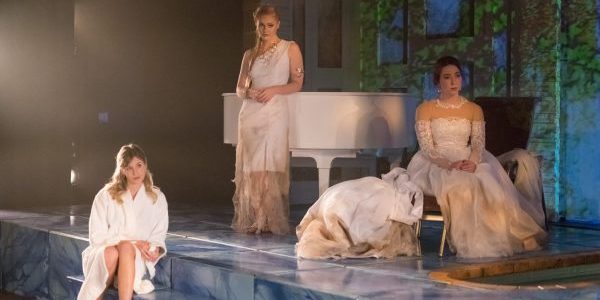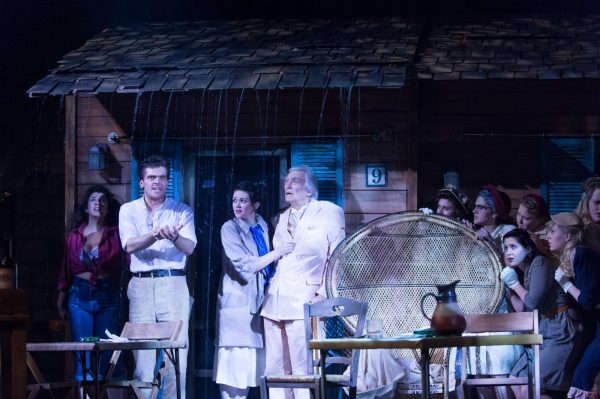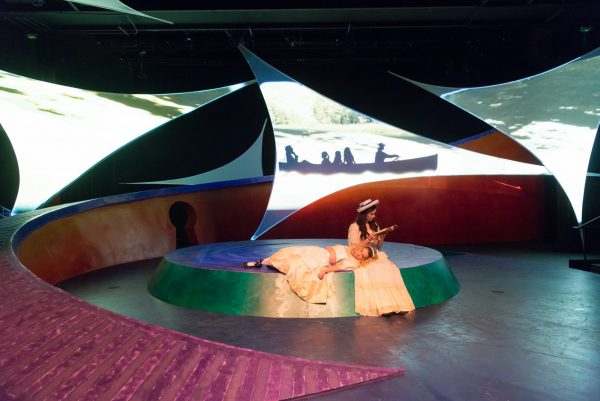Big Love by Charles Mee, with its three women (and 47 sisters) fleeing their homeland of Greece to escape forced marriages to men they have never met, has been called a big, beautiful, fantastic mess. Just like love.
Or perhaps like water…
November’s theatre production not only featured actors and technicians from the School of Music, Theatre, and Dance at Colorado State University, water also played a major role in the on-stage dynamic. Unlike the script, however, everything was being done to keep the water in check.
Creative teams have successfully incorporated both projected and actual water into theatre and opera productions at CSU for many years, from a running water pump in The Miracle Worker by William Gibson to on-stage rain in The Night of the Iguana by Tennessee Williams to projected bodies of water in Alice in Wonderland by Lewis Carroll and Idomeneo by Wolfgang Amadeus Mozart.
For this semester's play, where the script called for a bathtub, CSU Theatre devised an 8’ pool center stage. “The script is loosie goosey,” declared set designer Roger Hanna, assistant professor of theatre. “The playwright lets you change the music, change the lines, change the ending, whatever, it’s all fine with him. The physical location of the play is a patio of an Italian villa so a bathtub doesn’t make sense, unless you’re in a Cialis ad!”
The oval-shaped pool also lended itself to being an attractive obstacle on an otherwise fairly bare stage. “Your job as a set designer is to create obstacles so the director can have the cast make different choices about their movement, like going left or right around the pool, or even through the pool,” explained Hanna about his dual-purpose design solution. “When you design a set, you don’t do it in the way most people organize a living room with stuff against the walls,” he added. “Basically you’re trying to arrange the furniture in the least efficient way possible and make a variety of paths.”
When water is at center stage, the key to success is collaboration between the multiple theatrical shops.
“As a technical director, two things instantly come to mind when someone says ‘water’ in a production meeting,” said Steven Workman, CSU Theatre’s technical director. “Safety and weight!”
Safety was paramount, especially in Big Love where there were multiple fights and even a murder. “It’s just a play and we didn't want anyone to get hurt, so we were trying to be very careful about who went in the pool, and when, and that the cast was aware of the presence of water,” Hanna said.
Workman agreed. “Water can create very slippery surfaces on the stage that actors who are focused on their performance aren’t necessarily thinking about, so it is our jobs as technicians to make it as safe and as feasible as possible.”
The region of the country determines water’s hard or softness, impacting its weight, which is approximately 8.345 pounds per gallon. At 3’ x 8’ x 2’ deep and holding 340 gallons, Big Love’s pool weighed about 3,000 pounds with an actor in it, driving the set design as well as its construction.
“You’d spend an awful lot of money to support more than a ton of water, so we dropped the pool to the floor and built a platform around it,” explained Hanna, barely touching on the laundry list of issues the use of water created for the production team.
“Luckily for us—and probably the only time I will ever say it—the floor in the studio theatre is half wood and half concrete, so we’ve placed the tank on the concrete portion of the floor so we will have no problem supporting all of that weight,” said Workman.
Although the designers had a quick support solution, the tank surround presented layers of complications. With a mind toward conservation, CSU Theatre reuses stock elements, like platforms and stairs, when making sets. “The water can’t splash on the platform. We don’t want to get stock platforms wet because they warp, and then have to be tossed,” Hanna went on.
Heidi Larson, instructor of scenic painting, had the answer: edging the pool with painted ‘tiles.’ Larson tested various waterproof paints and clear-coated the entire floor with four coats of poly urethane, protecting the tile dressing, the platform, and the studio’s partial wood floor below.
And what if the tub had leaked? Workman ensured that it didn't, but if it had, that tricky safety element came up again as nothing electric could be on the ground. CSU Theatre’s master electrician, theatre alum Dan Minzer, dressed cables higher than usual, working with the lighting designer, junior theatre major Ray McGowan, on elevating those elements as well.
Director Eric Prince contributed his own complications as he envisioned the murder taking place in the pool. While certainly dramatic, introducing theatrical blood would have involved draining, cleaning, and refilling the tank every day, using vast amounts of hot water or requiring a pool heater, neither being practical or demonstrating conservation.
“The projection designer, [director of Theatre, Price Johnston], determined that he can use projected blood instead of trying to get the water to a comfortable temperature by showtime,” said Hanna, checking off one more issue, but creating another one, namely storing 340 gallons of water on stage during one week of tech and two weeks of performances without it stagnating.
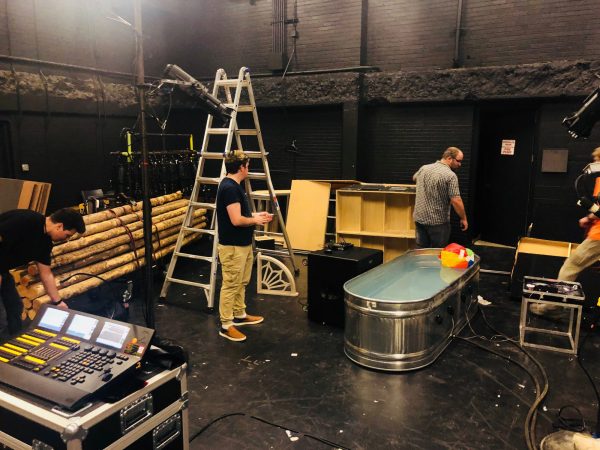
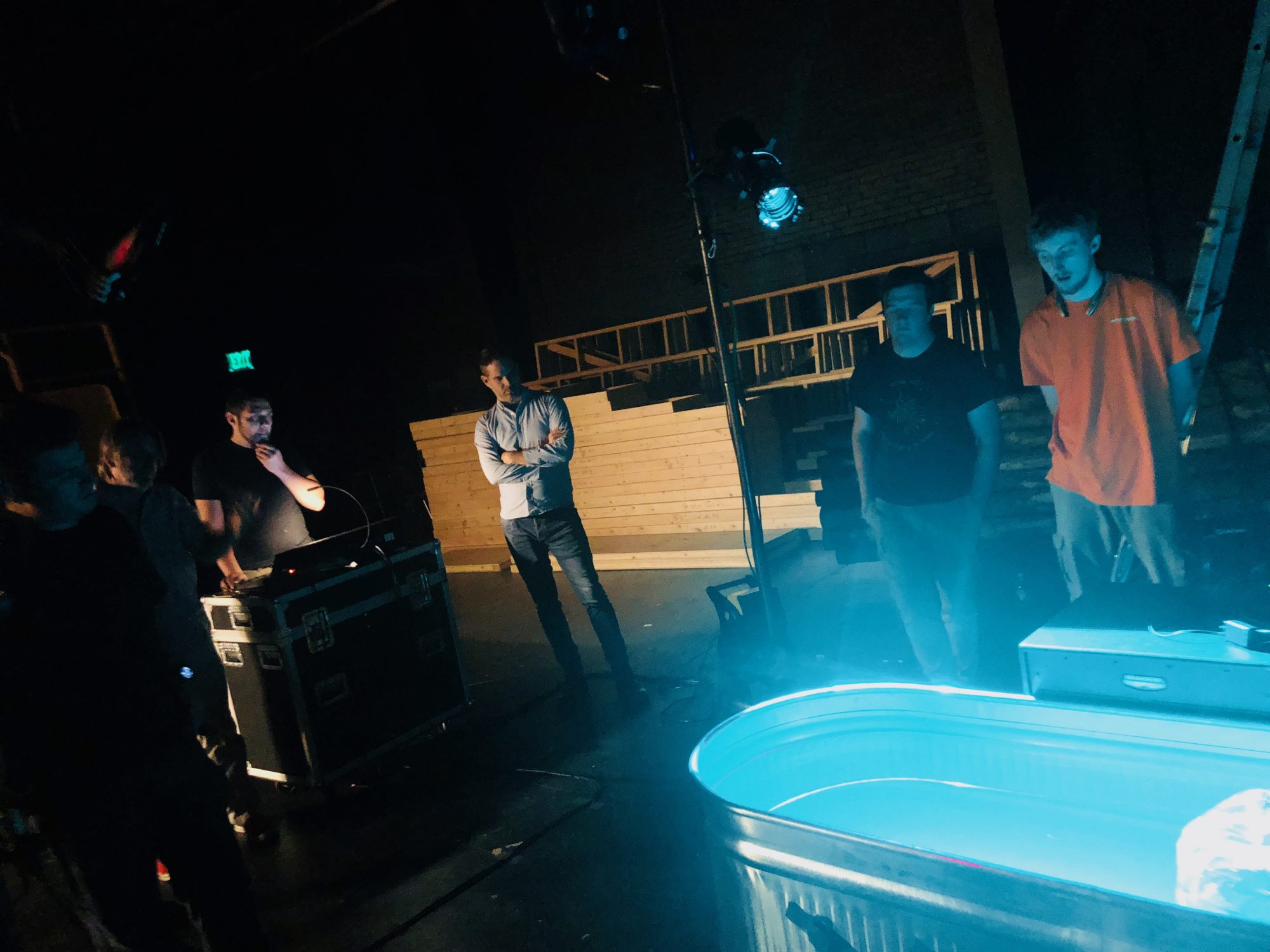
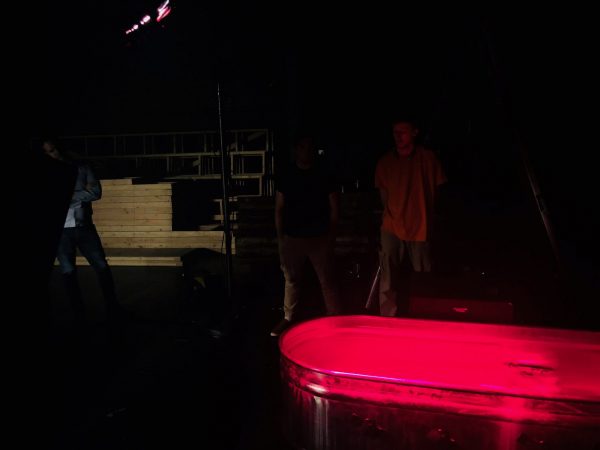
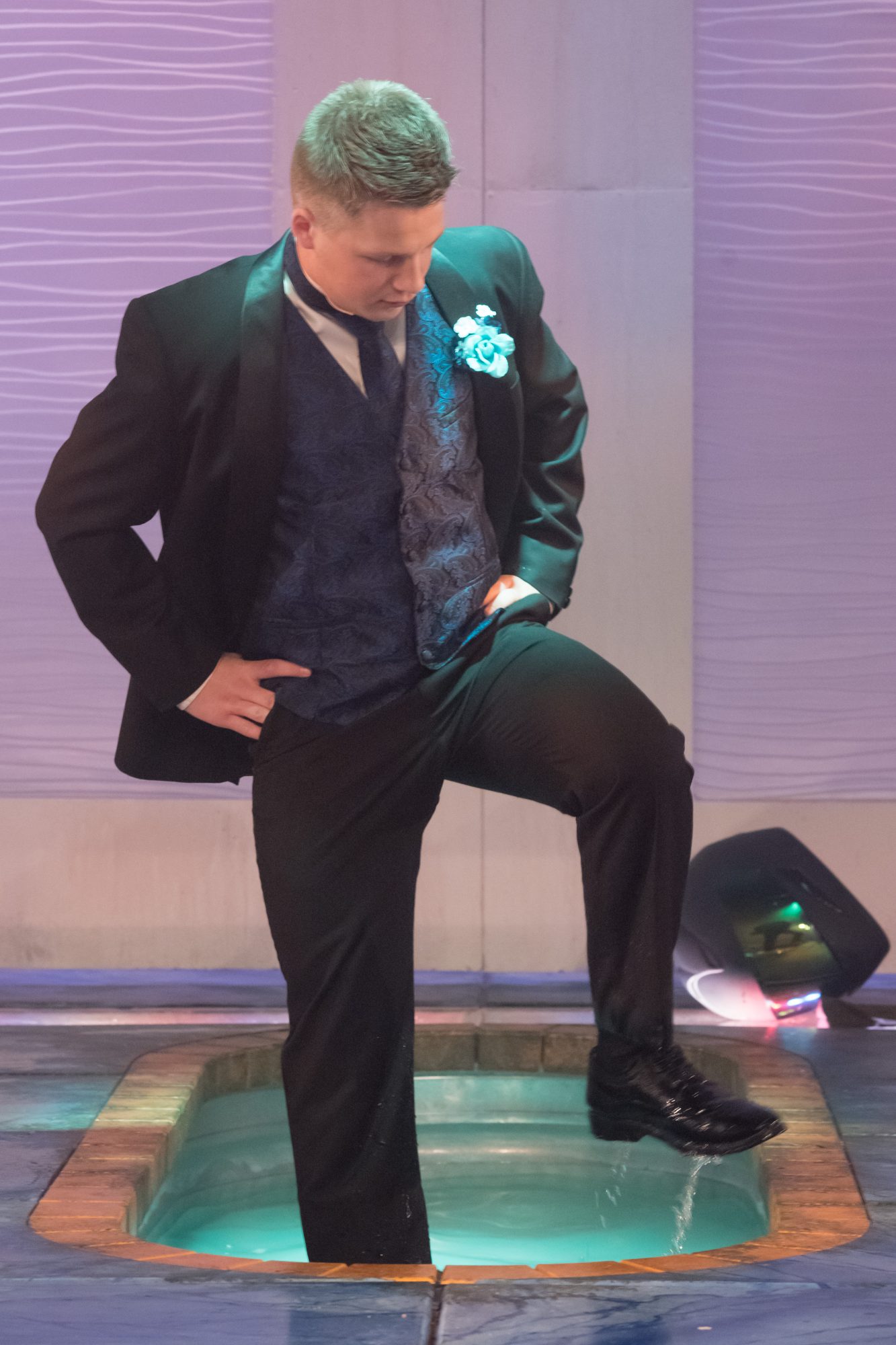
“As we were talking about these challenges, Gia [Pizzichini], our hair and makeup designer, remarked that she had worked for a pool company for a year and could get advice. When you talk about problems as a group, usually someone has an idea or solution.” While pool chemicals could keep the water sufficiently clear, they created concerns for the costume shop should water splash on the clothes.
“As it pertains to water and costumes, people often forget the fundamentals of fibers and the fact that certain fabrics bleach or shrink when they get wet,” said Costume Shop Manager Elise Kulovany, highlighting this ground rule with junior theatre major Laura Myers, the show’s costume designer, advising her to source polyester dresses and avoid fibers that don’t play nicely with water, such as silk and leather, which tend to spot.
Another factor in Kulovany’s selection process, in reference to the use of water, is always the vision of the director who may want someone to appear soaking wet—impeded when certain fabrics absorb water or wick away moisture—or want someone wet one scene and dry the next. “This is where theatre magic steps in and we practice our ideas until they create the desired effect or the vision is tweaked to accommodate what’s possible,” she said.
For Big Love, the costume shop practiced multiple scenarios, yet water never behaves quite the same way twice. Kulovany explained how difficult the element is to control: “As is the case with most efforts in theatre, communication is key. Talk early. Talk often. Figure out if everyone is still on the same page during the entire process. This is the only way water doesn’t become our worst enemy.”
While Big Love examined some of the world’s most enduring questions about love and marriage, incorporating water into the production was slightly easier to solve. “Everyone has to agree on these things,” said Hanna. “It’s a super fun project to work on as long as everyone knows about it from the beginning. We could never just add it at the end!”
